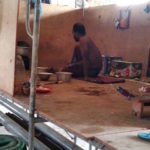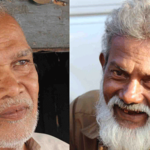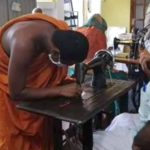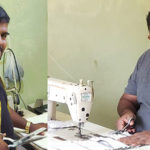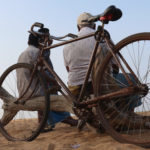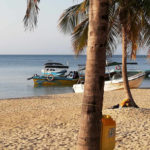Drowned Lives:
No Compensation Yet, After Homes Submerged For Sri Lanka’s Biggest Irrigation Project
Locals say they haven’t been compensated for land lost to the Yan Oya irrigation project – and that a banana company may well be benefitting more than them from reparations.
The Yan Oya project, which involves building a reservoir that would be used to bring water to solve irrigation problems in nearby areas, has come under criticism for many reasons. But now locals say there is one more reason to doubt the usefulness of this irrigation project, the largest in Sri Lanka, inaugurated in 2012.
Environmental activists have already criticised the Yan Oya project as unnecessary and bad for the environment. In order to build the reservoir, lands have to be flooded. And as the Sunday Leader newspaper noted as far back as 2013, there would be “a total loss of 1,727.16 hectares of paddy land in order to develop 650 hectares of new paddy lands”. Which, as the newspaper pointed out, didn’t make a lot of sense.
The project also means that just under 300 families in five villages in the Trincomalee district will have to be moved, and will lose their homes and their land to the reservoir. Around the same again will need to be moved in the Anuradhapura district.
Authorities have told many of the affected locals that they would be compensated and moved to the Kajuwatta area, which is about 15 kilometres away. Apart from the fact that no progress appears to have been made on the relocations, the villagers also have another question: Why are they being moved so far away, to a relatively remote area, when there is closer land available on the bank of the reservoir?

The villagers have requested they be moved to this closer land instead but their requests have been rejected, apparently because of the destruction their moving there would cause in the forest. However, as the villagers point out, the Kajuwatta location is even more densely forested than the land closer to the reservoir.
“As far as we know the Kajuwatta land has denser jungle than the lands we want on the reservoir bank,” says Lal Gunathilake, who lives in the Pamburugaswewa area and whose house and paddy field have been taken over by the Yan Oya project. “We are completely opposed to attempts to push us into the jungle. We have heard rumours that the land on the reservoir’s bank will be given to an Indian company that wants to grow bananas there. If that happens we will go on a hunger strike,” he threatened.
The families that are supposed to move have been promised state help to relocate as well as compensation for their losses. But for many, this has yet to happen.
“In the Pamburugaswewa area, 189 families will lose their land,” says Sarath Lal Vithana, a former member of the urban council for Gomarankadawela. “These are traditional villages, that our grandfathers settled. The government has said that the project should be completed by the middle of 2017. But as yet, we have no idea what is going to happen to us.”
Some of the families’ land has already been submerged and these locals have found temporary accommodation. But they’ve been given neither money nor provided rental accommodation, says Sujatha Aranpola of Mahasorowa village. “Nine families lost lands. Now we have to live in the homes of other people. The Yan Oya project promised us LKR15,000 [EUR90] every month for rent. But up until now we have not seen a cent. We have lost everything.”
The families who have lost land have also been critical of the amount of land they were supposed to be given in compensation for having their property flooded by the project.
The government planned to hand out one hectare plots of land to those who had lost theirs. However, some of the villagers actually farmed between two and four hectares of land.
“A lot of people in our village had more than two hectares and they had deeds for that land,” complains Sampath Kumarasinghe, who lost his property to the dam. “According to the state everyone will be given the same amount of land in compensation. That’s obviously not fair.”
The local authorities tried to provide explanations for the various delays.
“The Yan Oya project will see 140 families will lose their houses,” confirms the head of the Gomarankadawela county authority, S. M. C. Samarakoon. “If we add in the extended families, that goes up to 275 families. But the official purchase of much of their land has not even been announced. As soon as that happens, the properties will be valued and the families will be informed. Right now, nine families have lost their homes to the dam,” Samarakoon notes. “They have been informed about how much compensation they will get but as yet no new land has been allocated to them. This is mainly because most of them do not like the property that’s been issued to them in Kajuwatta. So it’s difficult for me to say any more than that.”
Despite the calm words of local officials, those affected remain unsatisfied.
“There is no water for us to cultivate the rice fields. Are we going to have to eat soil?” argues Pamburugaswewa Malwage Namawathy. “We have become destitute. There is nobody helping us with this terrible injustice.”
Once again, the villagers say, it seems that a development meant to make the lives of ordinary Sri Lankans better has ended up making things a whole lot worse for some of them instead.


